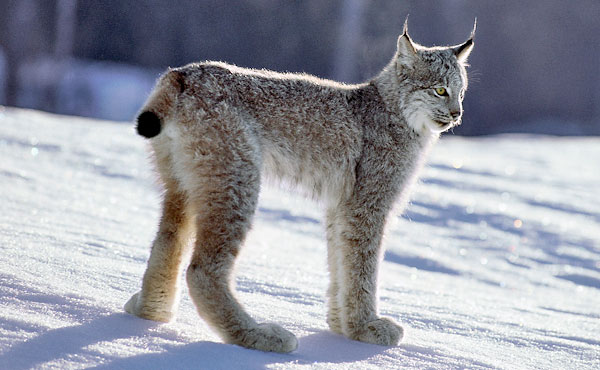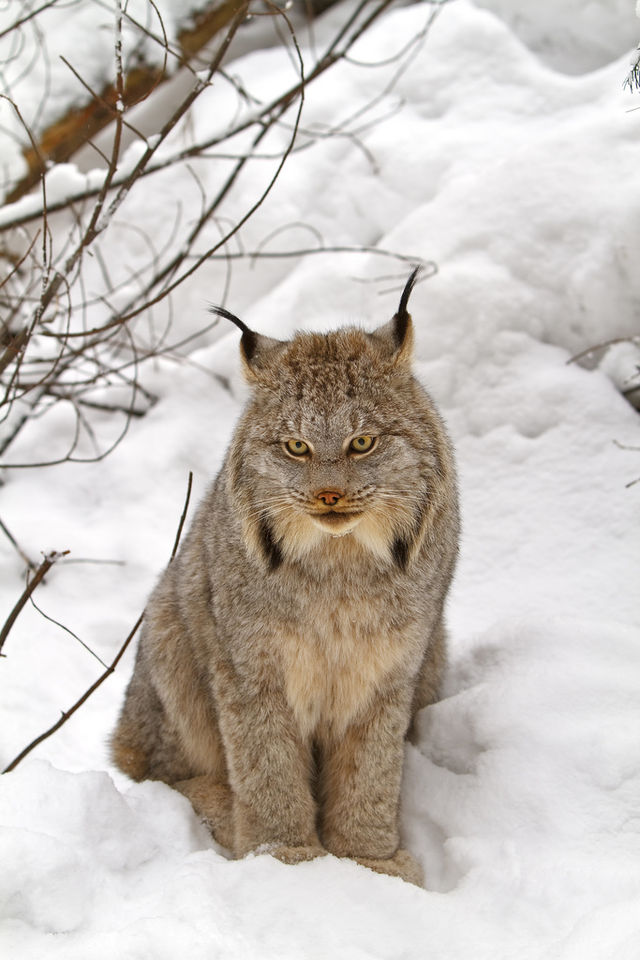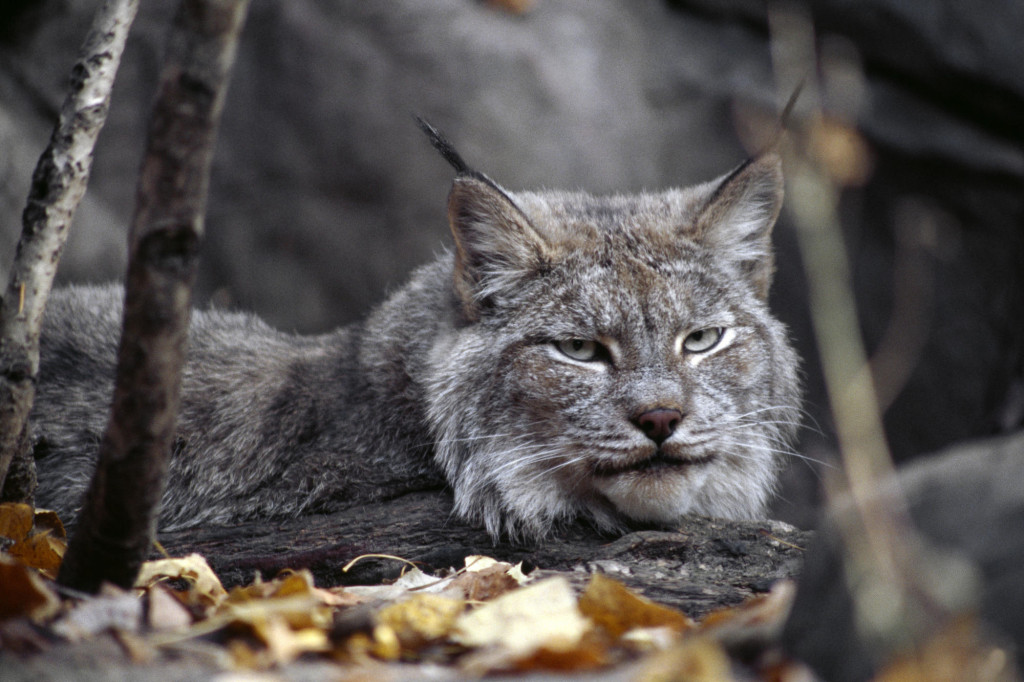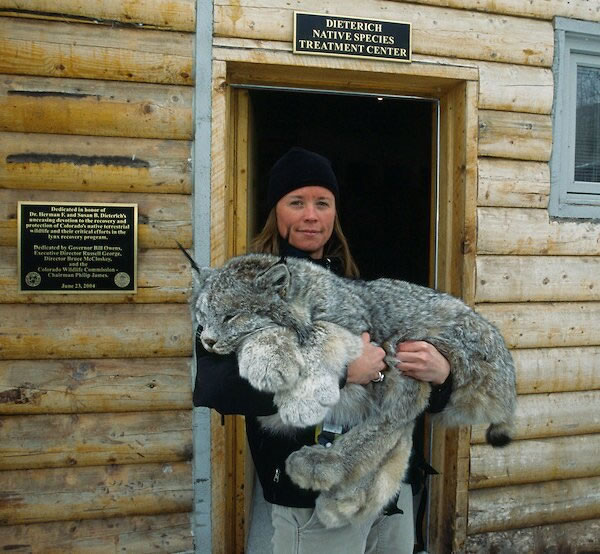The Canada Lynx

“This photograph of a woman holding a recovering Canadian Lynx was taken at the Frisco Creek Wildlife Hospital and Rehabilitation Center in Colorado (formerly known as the Dietrich Native Species Treatment Center.) This wildlife rehabilitation center played a key role in Colorado’s Canada lynx recovery effort, and continues to do so today.” –sourced from: “Mud And Feathers” https://thistle25.wordpress.com/2014/03/24/big-kitty/

Canada Lynx
Kingdom: Animalia
Phylum: Cordata
Class: Mammalia
Order: Carnivora
Family: Felidae
Subfamily: Felinae
Genus: Lynx
Species: Lynx Canadensis
Members of the genus Lynx:
Canada Lynx
Eurasian Lynx
Iberian Lynx
Bobcat
Canada Lynx Conservation Status: http://www.iucnredlist.org/details/12518/0

Background on the Lynx Genus
A Lynx is any of the four species within the Lynx genus of medium-sized wild cats, which includes the Canada Lynx, Eurasian Lynx, Iberian Lynx, and the Bobcat. The name “lynx” originated in Middle English via Latin from the Greek word λύγξ, which is derived from the Indo-European root leuk, meaning (“light, brightness”)- in reference to the luminescence of their reflective eyes.
The four Lynx species have the largest range across the world of any felid, and are found on both sides of the Atlantic. All Lynx or (Lynxes, you can say it either way) have a short tail, characteristic tufts of black hair on the tips of their ears, and large paws. Their paws may be larger than a human hand.
Body color varies from medium brown to gold to cream, and is often marked with dark brown spots, especially on the limbs. All species of Lynx have some white fur on their chests, bellies, and on the insides of their legs.
Lynx’s pupils contract to circles instead of slits in daylight. Generally the pupils of most small cats contract to vertical slits, while those of Tigers and most other big cats contract to a circle. There some exceptions, just to name a couple: the Snow Leopard’s eyes contract to a sort of oblong shape and the Pallas’s Cat’s eyes contract to circles even though it is a smaller cat.
People hunt and trap the Lynx species and this must be banned. Trapping of wild cats and other animals is cruel. They can die long painful deaths from dehydration, hypothermia, and blood loss often from attempting to chew their own limb off. Trapping is also disruptive to the ecosystem at large. https://thefurbearers.com/the-issues/trapping/cruelty-injuries
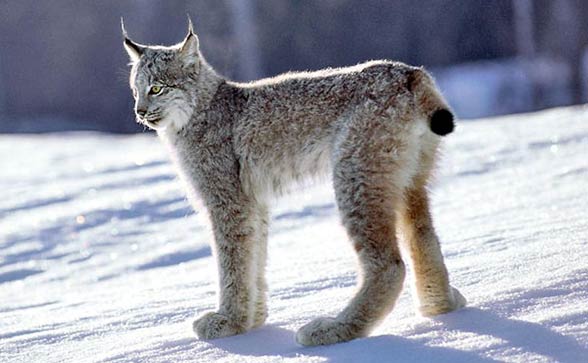
The Canada Lynx
The Canada Lynx lives in both Canada and the United States, including Alaska. It is a citizen of the forest mostly but will also inhabit the snowy tundra and scrubland in the north. The Canada Lynx has the trademark Lynx ears with the tufts on top, a tough thick set body, extra long hind legs, the instantly recognizable Lynx stumpy tail- and absolutely enormous fluffy feet.
The Canada Lynx has giant feet tufted with fur so they can walk on the snow- their fur-padded feet are twice as good at supporting weight as a Bobcat’s. Their body is typically lightly spotted with grey frosted fur. It’s size can vary, from 60-120 cm (2-4 ft). It weighs 8-14 kg (18-30 lbs).
Unlike a lot of other wild cat species, the Canada Lynx is diurnal (active during the day, sleeps at night). Its favorite meals are snowshoe hare, rodents, and deer. It is primarily a solitary animal but they have been observed hunting in groups. The Canada Lynx is a shy cat and while not a timid hunter, it will rarely fight over a carcass even if it’s the one who captured it. The Canada Lynx lives up 21 years.
Here is an adorable Lynx family playing on an Alaskan man’s deck: https://kimcampion.com/animals/an-alaska-man-woke-up-to-find-an-entire-lynx-family-playing-on-his-deck/
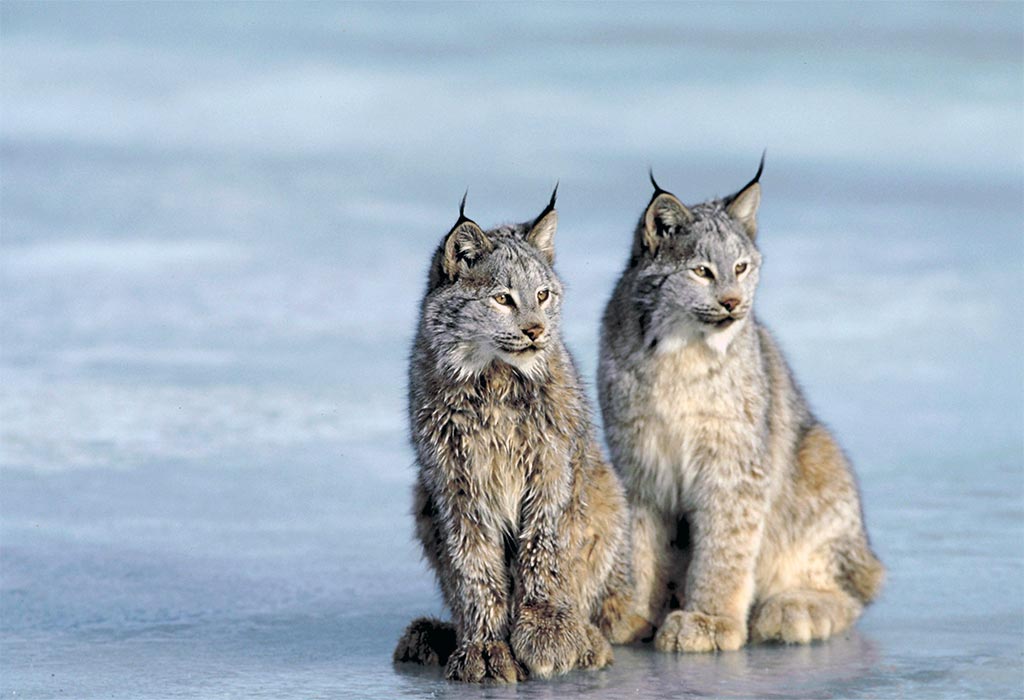
Some farmers have complained the Canada Lynx attacks their livestock but cat conservation authorities are closely monitoring the process and studies show that allowing adult cat predators to live near farms is actually much safer for livestock than relocating the cats or worse, killing them. Older adult cats learn to stay away from the farms in order to avoid conflicts with humans. If they are removed, the young inexperienced ones come into the abandoned territories to try their own luck at the farm and the cycle continues. Experienced animals learn to stay away from the area and do so. http://journals.plos.org/plosone/article?id=10.1371/journal.pone.0079713
Additionally, predation of farm animals is generally very low. Governments should compensate farmers/ranchers for any loss of livestock and continue to protect apex predators like the Canada Lynx, who have a right to live there too and also provide a valuable service by keeping the ecosystem healthy and in balance. Canada Lynx primarily eat deer and rabbit, whose populations are kept healthy and right sized due to the Canada Lynx’s efforts.
More wild cats here

